Hi Gamasutra Readers!
You may remember me from way back in 2014, when I wrote about the Making of Princess Birthday Party Puzzles. Well I'm back! In VR form! I've been transitioning into VR development from mobile development, and... well, I'll let the diary take over from here :) Note, this was originally intended to be spread across several pages but is presented here as only one very long page. So enjoy/excuse the length!
I'm super excited to be releasing my new project for 2018, Cinderella VR, an awesome collaboration with Scott Adelman!
I've been keeping a dev diary about how we're making the game- it's been a really long journey so far and we're not quite done! I want to share our experiences developing a virtual reality game. Coming from a mobile game background, there are tons of dev write-ups and pre-mortems and post-mortems but VR is still fairly new and there aren't as many out write-ups there. Hopefully this will add to the VR game dev diary library and my hope is that it helps others get inspired about making work in VR! And also hopefully everyone will check out our game too :)This is a much bigger project that I'm used to blogging about, so I'm going to try and divide this up into sections. It's also an homage to ultra-long, ultra-specific blog entries that I've occasionally had the privilege to enjoy. I thought of editing it down, but it's been a long 10 months and a lot has happened and we've done so much work that I'm leaving it all in. I've also been writing it for a few months now, so I might mention being at a certain point in the game at a certain point in the diary, then later I'm totally at a different point! It's not time travel, just bad editing.OK so here is my online novel about making a VR game. Enjoy! |
Scott and I have collaborated on many games in the past six years- we've made 13 mobile games, including 12 animated jigsaw puzzles for kids, and a fun little AR (augmented reality) game called Disco Cats. The jigsaw puzzles were similar in that the gameplay was the same, but we'd change up the theme and the graphics and UI to make lots of fun variations- Mermaid Princess Puzzles, Fairy Ballerina Puzzles, Weather Puzzles, Number Puzzles, and a lot more. Disco Cats is a really unique AR app with two main features. One, you get little dancing cats and disco lights and music and they dance in AR- so you can point your phone at your desk, and they'll do a little dance on your desk. Two, you can print out a coloring sheet of a dancing cat and color it in however you'd like, then snap a photo and the cat will become animated and dance as well. It's wild!Our games have gotten 10 million downloads all together! 10 million people saw our games on app stores, said "yes, I want that" and downloaded it to their phones. It still blows my mind.In addition to our collaborations, we've both done many other projects that are pretty cool- click through to our websites to see more!You can see all of my games here:http://www.lauratallardy.comand all of Scott's games are here:http://www.scottadelman.com |
PART 1: GETTING STARTED
Chapter 1: The Setup
What to make?
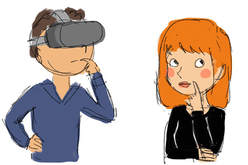
At the beginning of the year, we talked about what project to work on next- we loved making animated jigsaw puzzle apps and I'd be happy making them for years and years, but unfortunately larger forces beyond our control suggested we move on to a new type of project. We were both really interested in learning Unity, and how to make a VR game. Previously we've worked in Corona (great engine and amazing community) but for VR we needed a big 3D engine, and Unity came with all the bells and whistles we needed so Unity it was.
I had wanted to do a fairy tale game for a while- if you've seen my work, it's no big stretch to imagine I love fairy tales! We were overwhelmed by the choices, so we narrowed it down to three (I believe it was Sleeping Beauty, Cinderella or Puss in Boots). Our original choice was Sleeping Beauty, but once I got into the story and trying to think how to translate it into a VR game, it wasn't quite jelling in the easy way that Cinderella seemed to lend itself to the medium. The story was a little kickier, there were some fun characters involved, and Cinderella is awake for the whole story which is a plus for a protagonist!
Chapter 2: Planning out Development
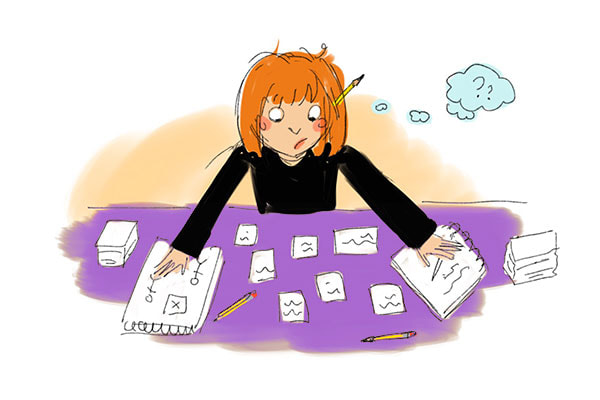
Breaking down the Gameplay
After we had our story, we had to break it down into parts. We mapped out the script into three main acts- getting to know Cinderella and her life was Act One, going to the Prince's Ball was Act Two, and the shoe fitting and ending was Act Three. The general plan was to play out the story in a 3d environment using 2D characters- I've done a lot of 2D animation for our other games and the softwares fit together so we thought it would be a fun style. So the story plays out in front of the player, and they jump in occasionally to "help out" with an interactive game.
Who does what? Setting up the teamwork
We sketched out basic game ideas, we had our basic scenes. Then we decided who would do what. I've done the art for all of our other games so I volunteered for art again- I'd put together the 3D sets and do the character art and animation and whatever other design we needed. I also took care of the the script- it's not perfect but I'm proud of it. Scott has strong programming skills so he worked on getting the interactions working in Unity and VR- taking the scenes I put together and making them come to life with interactive objects, particles, and all sorts of fun stuff. Since we are a two-person studio with limited time, we decided to create what we were reasonably capable of, and out source the rest. We purchased a good amount of 3D assets- while I'd love to learn more about 3D modeling I didn't have enough skills for a project of this level. We also sourced music and sound effects, and will be hiring voice actors.
Fun fact, we need dialog to work out the animations and the scenes and timing but didn't want to hire voice actors right away. Since the game will be changing slightly until it's done, we decided to put off the voice actors until the end when we had a finalized script. So in the meantime, I recorded the computer talking for placeholder audio- so all the characters have digital Siri-style computer voices. I've gotten used to it by now, but I'm sure having real non-computer voices will add a lot.
Chapter 3: Tools We Used
What software/systems to use?
We had both decided on using Unity for this new project, since it can be 2D, 3D, VR- and seems like a good one to know. We've used Dropbox for file sharing in the past, so that one was easy. We have both an Oculus Rift and an HTC Vive between us, and both also have mobile VR gear, but we decided to work on just Oculus/Vive since the controllers are similar. My hope is to also port a gaze-control version for mobile one day, but I have a long list of things to do one day, haha.
Version Control?

The biggest question was version control. With our apps, many of them were easy enough to work on without version control. As we got into Disco Cats however, we started using Git and Bitbucket so we could both work on the Corona-based game without stepping on each others' toes.
A quick Google search revealed that PlasticSCM was the preferred version control software for Unity but Git/Bitbucket could also be used. Trying to keep the budget down, we went with Git (PlasticSCM asks for a monthly fee). It definitely had a learning curve as we got up and going, and we ran into more than one problem- somewhere between Unity and Git I'd overwrite prefabs that would erase script assignments and bug everything up- still not sure exactly what we did there and we were able to untangle/rewrite everything again (Sorry, Scott!!), but I was left wondering if PlasticSCM would have averted some of these Unity-specific issues.
But, at what cost??
(probably 10 months of a PlasticSCM subscription)
Art

I'll go more into the art stuff later, but we also used Esoteric's Spine software for the animations- they were importable in to both Corona and Unity, so I was happy to have familiar software to work in.
Everything Else
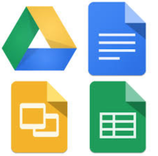
A game cannot be built on Unity alone! Actually, it totally can be. But we had some other random needs. We're across the country from each other so we needed a chat- we'd been using GChat for years so GChat it was. I liked the ability to archive important conversations- we hashed out a lot of dev plans in GChat. Unfortunately searching was sometimes difficult and we are chatterboxes with a quickly moving chat log, so anything super important I manually copied and pasted in the master Spec Doc.
The Spec Doc is the central document for the game- it's stored on Google Drive and shared between us. I created it to keep track of our sprawling project- characters and sketches, scenes and diagrams, descriptions of scenes, minigames, marketing ideas, game tutorials, and just anything else that was important to keep track of. Going back it's a lengthy document but all the stuff in there is super important.
There's also the Asset Sheet, a Google Docs spreadsheet that lists out 1) All the scenes and our progress on various tasks 2) All the animations needed for each scene and character 3) Just long lists of 3D assets to keep track of what we downloaded from where 4) I know there's more than 3 sheets in there but I think one is just more 3D asset links 5) Also there's a list of audio sound effects, background music, and voice actor links. It's really the sheet I work from the most.
There's also an expenses sheet, which I'll talk about later.
Trello was the other big win, we kept our tasks going and color coded on that for a while, although we both deviated off and on with text file/email lists and Trello lists. The thing I like about Trello is the mobile app- I'm often on the road while making this game and can't immediately access my computer, so if we are chatting on mobile and I have to jot a few things down I can do it with the Trello app and have it saved.
A few others: Text Edit for notes, Photoshop, Procreate and Spine for graphics, Quicktime for recording temporary dialog and taking screencap movies of strange bugs. Terminal for fussing around with Git. Chrome/bitbucket to make sure I haven't mucked up the Git repo. Weebly for a website. Game Bar for screen recording for the trailer.
Chapter 4: Money
Budget & Expenses
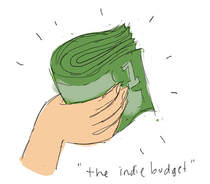
Wow this is always a delicate topic! We've prided ourselves on most-all of our games generating a positive cash flow, and we manage that mainly by keeping expenses low low low. We make everything we can and try to shoestring the rest. We're also both on an indie budget, so that's where we're at going into this. I'm sure different studios have different budgets.
Our mobile game budgets ranged from $25-60- maybe some were more and some were less but the majority of them fell into that range. Translations, maybe a song license for the promo video, possibly a press release, sometimes a contest. Traditionally we kind of split the cost, one person or the other volunteers and we keep track of who spent what. Then as the game starts to generate revenue, we reimburse ourselves according to the expenses list, then divide up the profit. That's how we've worked in the past, and we decided to do the same for this game.
We were both willing to put down a couple hundred, more than usual since it was such a larger scope of a project, but we wanted to keep it under $500 if at all possible. I don't think we hit that goal exactly but we didn't go wildly over it, so that's decent at least.
Shopping List!
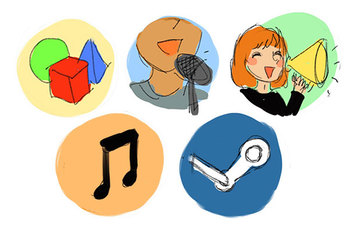
We both came in with VR rigs already so that was not an expense we had to deal with, thank goodness. Unity is free so that was not a problem either, and I already have my art software. With Scott doing the code and me doing the character art/animation, we needed:
-3D assets for the game world- environments, props, special effects, etc.
-BGM- Ended up using some free music but purchased a nicely composed song for our minigame.
-Voice Actors- Haven't gotten to this stage yet but this will be our biggest expense. The game has nine characters and the script is not short, and neither of us really have a good audio studio to set up/enough friends to ply with pizza so we're just going to hire a bunch of voice actors and hope for the best.
-Steam fee- Haven't gotten to this either, but the last time I checked it was a $100 fee to list a game on Steam. I believe you can earn it back when you reach a certain threshold, but you do need to front that initial payment.
-Marketing- Been working mostly on the game, and while I do have ongoing marketing notes I don't have costs laid out for it yet. That said, I do have some plans and could easily spend plenty of money here!
So far our spending is on target but we still have the voice acting & marketing categories to spend in so the final numbers are not in yet. (hah! more on that later!)
Chapter 5: Timeline
Scheduling
Ohhhh gosh. Wow. Did we ever underestimate this job. We probably still are. It's still not done. (Edit- it's finally done!!!)
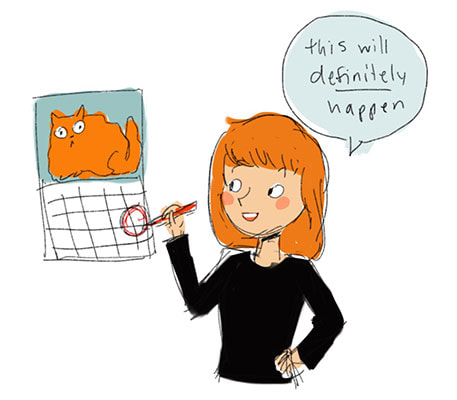
The Initial Estimate
We started in early January, and estimated it would take about three months so we'd ship at the end of March (I'm writing this in July). If we slammed on an app and both worked really hard, we could get it out in 1-2 weeks at the shortest, so we figured learning some new software and hardware would take a couple extra weeks, we'd have the prototypes in no time, and from there it was only a couple weeks to the finished product. It sounds so sunny and optimistic.
The Reality
Anyway we both worked really hard on the game- getting the environments set up and basic characters in, working out how to set up the game's progression and organize all the scenes, devising the activities and just doing a huge amount of coding and art and animation. By March we had a pretty good prototype for the game- it was laid out into scenes, it had characters and some voices and animations the beginnings of the activities and placeholders for others to come.
It was nowhere near done though, so we had an code-red meeting on how to finish it up and ship it ASAP- I estimated if we both kept slamming, we could get it out by the end of June. And hey- shoot for the stars, land on the moon! Scott worked like crazy and I tried to keep up, we got an amazing amount of work done and by this point you could play most of the game the whole way though- some things were missing but the game itself was there! Many of the activities were totally functional, and I had gotten a lot of the art/animation in. I love animation but always forget it takes much longer than I think it will!
So the game is in a good state, and the light at the end of the tunnel is visible. It just makes me raise my eyebrow that I thought we could bang out a completely final game using new software for new hardware in 12 weeks. Haha, we were so young then, back when we started



































